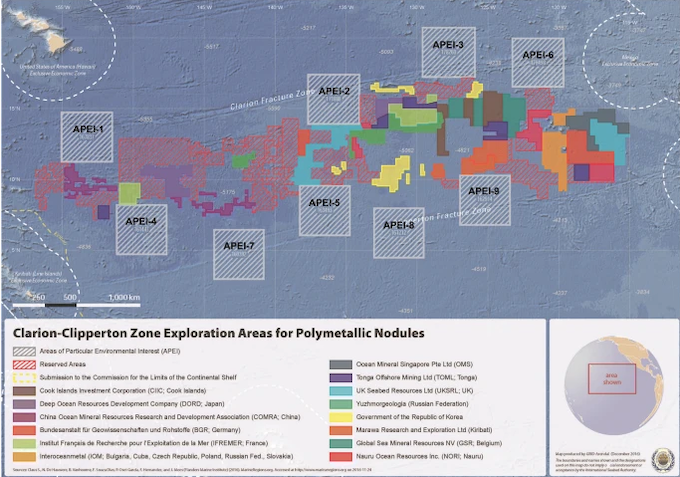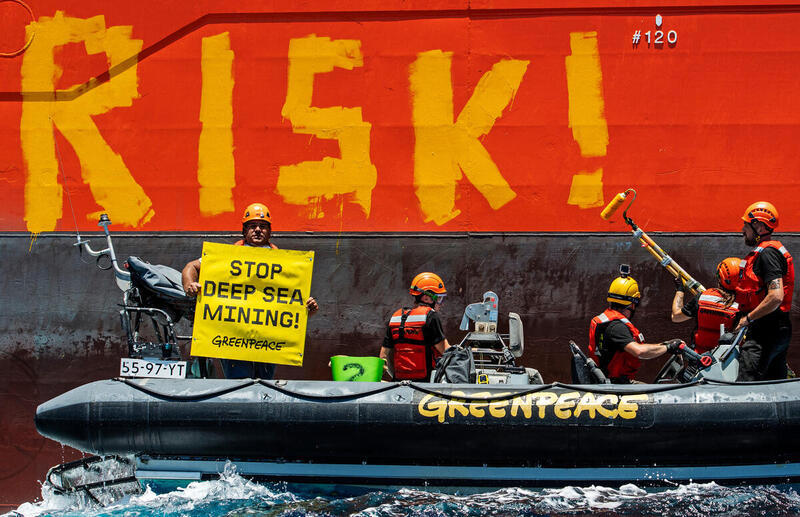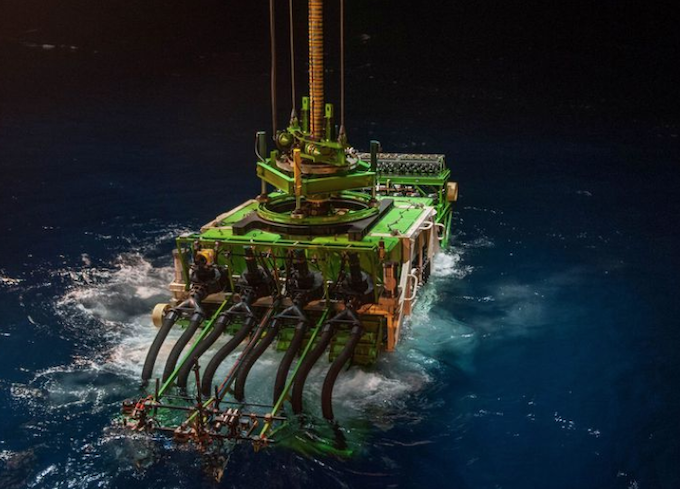Asia Pacific Report newsdesk
One of the world’s first deep sea mining pilot tests has resulted in a huge machine being stuck on the seafloor of the Pacific Ocean, reports Greenpeace.
A broken cable has resulted in the mining company Global Sea Mineral Resources (GSR) losing control of its 25-tonne robot “nodule collector” Patania II on the deep seabed in its Clarion Clipperton concession zone.
GSR has confirmed that “the connection between the Patania II and the cable has indeed come loose, so that Patania II is currently on the seabed.”
Dr Sandra Schoettner, a deep-sea biologist from Greenpeace Germany speaking from on board the Rainbow Warrior nearby in the Pacific Ocean, said: “It’s ironic that an industry that wants to extract metals from the seabed ends up dropping it down there instead.
“This glaring operational failure must act as a stark warning that deep sea mining is too big a risk. Losing control of a 25-tonne mining machine at the bottom of the Pacific Ocean should sink the idea of ever mining the deep sea.
“The deep sea mining industry claims it’s ready to go, but investors and governments looking at what happened will only see irresponsible attempts to profit from the seabed spinning out of control.
“This industry has ‘risk’ written all over it and this is exactly why we need proper protection of the oceans – a Global Ocean Treaty that helps to put huge areas off-limits to industrial activity,” said Dr Schoettner.
Not the first time
This is not the first time GSR’s Patania II has failed during pilot tests. In 2019, the company had to stop the trial of the same prototype nodule collector due to damage caused to the vehicle’s communications and power cable (‘umbilical cable’).
Last week, Greenpeace International activists painted “RISK!” across side of the ship Normand Energy, the ship chartered by GSR to operate the Patania II, to highlight the threat of deep sea mining to the oceans.
GSR has been awarded a 75,000 sq km exploration contract area – 2.5 times the size of Belgium – to operate in and was scheduled to do another test series in Germany’s contract area.

The tests were supposed to be a significant step for the industry’s planned development.
In New Zealand, the threat of seabed mining also looms large.
So far, environmental groups, iwi and hapū have successfully opposed attempts by Australian mining company Trans Tasman Resources to begin a 30-year mining operation off the Taranaki Coast, but Greenpeace Aotearoa is now calling on Jacinda Ardern to make New Zealand the first country to ban the risky practice altogether.
Already, almost 10,000 people have signed the petition to ban seabed mining in New Zealand since its launch earlier this month.











































